Shoes for Hammer Toes: Are High Heels Deforming Your Feet?
If you're familiar with Softstar's footwear philosophy, then you probably already know we're not fans of shoes that place form over function. We understand that many women wear high heels and tight shoes as fashion choices, but we also see the damaging effects these shoes have on our customers' feet. One of the most common foot problems that women suffer from is hammer toes.
What are hammer toes?
Hammer toe can occur when feet are crammed into shoes so tight that the front of the toes are pushed against the front of the shoes for prolonged periods of time. One or more toes then remain bent with the middle knuckle pointing up, even when shoes are taken off. If the condition is left untreated and tight footwear is continually worn, these bent toes can become so rigid that they can no longer straighten out on their own. While any shoes that are too tight can lead to this condition, high heels seem to be a big culprit since the elevated ankle causes more weight to push the toes forward. This may explain why the condition affects more women than men.
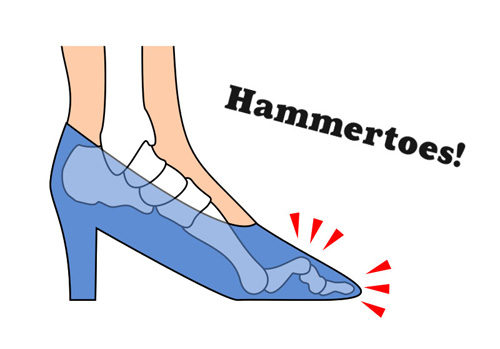
Common problems associated with hammer toes are swelling, corns and pain on the top or bottom of the foot. Extreme cases of hammer toes may require surgery to correct, but the good news is that many cases can be corrected and treated before it gets to that point. If you notice signs of hammer toes in your feet, some of these ideas may help:
How to Prevent Hammer Toes
- Minimalist Footwear: Look for shoes with flat heels and plenty of space to allow your toes to stretch and spread. We're proud to say that all of our shoes at Softstar feature these qualities.
- Less Time in Heels: If you're unwilling to give up your heels, at least try to minimize how much you wear them. Instead of wearing heels every day, is it possible to save them for more special occasions? Giving your feet a break from time to time can do wonders.
- Toe Workout: Practice picking up a towel by grabbing it with your toes. You can also try picking up small objects, such as dice. Doing this several times a day can help stretch and strengthen your toe muscles.
- Show Your Feet Some Love: Getting a foot massage and stretching your calves can help loosen muscles and improve circulation.
Shoes for Hammer Toes
Need suggestions for minimalist footwear? We may be biased, but we think our handcrafted Softstars are the best:
-
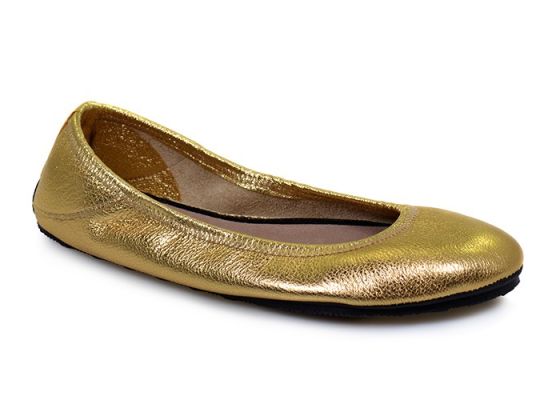
 Adult Ballerine Flat
Starting at $175.00
Adult Ballerine Flat
Starting at $175.00 -
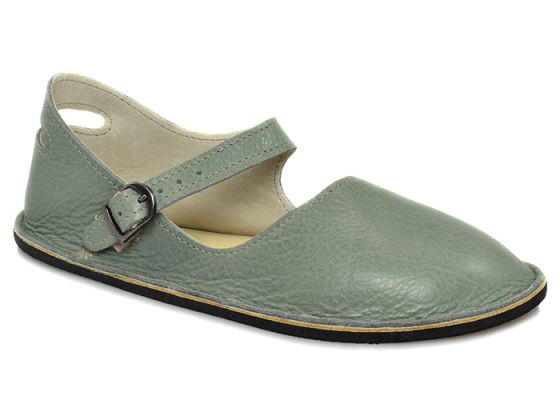
 Adult Merry Jane
$140.00
Adult Merry Jane
$140.00 -
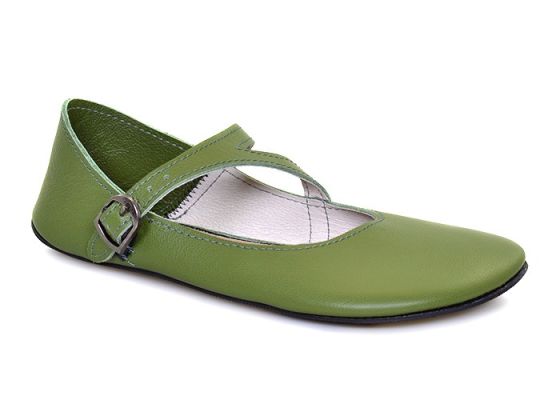
 Adult PRIMAL Merry Jane
$185.00
Adult PRIMAL Merry Jane
$185.00 -
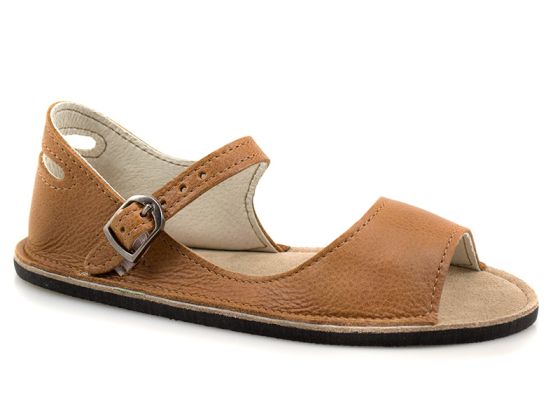
 Adult Solstice Sandal
$135.00
Adult Solstice Sandal
$135.00
Keep in mind that we're shoemakers, not doctors, and these tips shouldn't replace professional medical advice. If you've worn tight shoes for many years and think you have a serious hammer toe issue then we strongly recommend seeking help from a medical professional. An experienced podiatrist may be able to offer you a treatment plan specific to your needs. The sooner a foot problem is treated, the easier it is to correct.
Our friend and podiatrist, Dr. Ray McClanahan, has a lot of experience treating patients with hammer toes. He has also written this helpful article on the subject, which we're happy to share for anyone looking for more information:
Hammer Toes
By Ray McClanahan, D.P.M.
Hammer toes are a type of crooked toe that involve unnatural contracture, or bending, of your toes. In most cases, a hammer toe is characterized by a toe malposition in which the end of your affected toe points down and the first joint of your same toe—your proximal interphalangeal joint—points up. This crooked toe syndrome usually leads to rubbing within your shoe and pain. A hammer toe resembles an upside-down letter v when viewed from the side. This crooked toe syndrome most commonly affects your second to fifth toes, though it may also affect your big toe. This health problem is more commonly experienced by women than men.

Foot with Hammer Toes
Condition Information
People who have painful hammer toes may visit their podiatrist for the following reasons:
- Their affected toe is rubbing on the end their shoe (signaling a contracted flexor tendon)
- Toes rubbing on the top of their shoe (signaling a contracted extensor tendon)
- Toes rubbing against another toe and causing a painful buildup of thick skin known as a corn.
Hammer toes can be flexible or rigid. Hammer toes often start out flexible and become rigid over time as your toe becomes accustomed to its crooked position. Flexible hammer toes are less serious than rigid hammer toes, as they can be easily diagnosed and treated in their initial stages. Flexible hammer toes are named as such because your affected toe still possesses some degree of movement.
Rigid hammer toes are toes that do not move when you try to bend them. Rigid hammer toes are particularly common in people who have advanced arthritis or among people who avoid appropriate care for a prolonged period. Tendons in your rigid hammer toe have become tight, and your joints may be misaligned and immobile. Rigid hammer toes may require surgery to help correct if more conservative strategies fail to resolve your problem.
Causes and Symptoms
Poor footwear choices can contribute significantly to the development of hammer toes. Shoes that are too small force your toes into a curled position. Over time, your toe tendons adjust to this positioning, causing your toe or toes to hold a hammered shape. Athletes may be especially susceptible because of the increased forces on the toes from shoes that are too small or tight. Heel elevation in footwear is also problematic, as it causes your toes to be pushed into the shoe’s toe box. Heel elevation additionally contributes to muscle imbalance. A common example of this is when your Achilles tendon—the tendon at the back of your leg that attaches your calf muscles to your heel bone—is too tight, causing the tendons on the top of your foot that attach to your toes to work too hard and hold your toes in an unnatural, elevated position.
Pain on the bottom of your foot, especially under the ball of your foot, is one of the most common symptoms associated with hammer toes. Other common signs and symptoms of hammer toes include:
- Pain at the top of your bent toe from footwear pressure
- Corns on the top of your bent toe
- Redness and swelling in your affected area
- Decreased joint range of motion in your affected toe joints
Treatment
Your podiatrist may recommend conservative treatment techniques for your hammer toes based on your foot structure, which will likely involve removing any thick, painful skin, padding your painful area, and recommending for you shoes that give your curled toes adequate room. Conservative care strategies for this health purpose may also involve the use of Correct Toes, our toe straightening and toe spacing device.
Your podiatrist may recommend a surgical procedure if your hammer toes are not helped by the conservative care methods listed above. Surgery for hammer toes is performed to help straighten your crooked toe. Your surgery will be performed in your podiatrist’s office or at a hospital, depending on the severity of your hammer toe. A metal pin is sometimes used to help your affected toe maintain its straight position during your recovery.

About Dr. Ray McClanahan: Dr. Ray's practice, Northwest Foot & Ankle in Portland, Oregon, allows him to care for those who find their highest joy when in motion. In his 17 years as a podiatrist, he has learned that most foot problems can be corrected by restoring natural foot function. He is also the inventor of Correct Toes, silicone toe spacers. His professional goal is to provide quality natural foot health services with an emphasis on sports medicine, preventative and conservative options as well as education on proper footwear.

Martin is a lifelong runner who began wearing minimalist shoes over 10 years ago when he found they alleviated his chronic foot pain, which eventually disappeared completely. He further studied proper running form through a series of workshops taught by the inventor of Correct Toes Toe Spacers, Dr. Ray McClanahan DPM. Martin has collaborated with several health care professionals to collect and share peer-reviewed studies that show the benefits of minimalist footwear. In his personal life, Martin loves living in the Pacific Northwest because it allows him to enjoy a variety of outdoor activities year-round, including hiking, cycling, rock climbing, surfing and snowboarding.


I have been working from home for the last year, so have worn no shoes at all during the day (lovely!) but this contract is ending and I need to start attending interviews ASAP. This requires that I go back to wearing heels during the day, which hurts a LOT! I can't afford time off to get surgery, and want to look professional (heels are just expected in my industry). I'm not sure what to do.
Any ideas?
http://www.softstarshoes.com/live-bare-blog/2012/05/01/every-womans-guide-to-foot-pain-relief/
Although the author, Kay Bowman, strongly discourages high heels, she also gives tips for strengthening your feet when you do wear them to minimize damage.
Similarly, you may want to look up Dr. Emily Splichal online. She is a podiatrist who encourages barefoot movement, but also loves wearing high heels herself. She trains runway models on how to keep their feet healthy. You can find a lot of info about her on Google searches and and on Youtube.
I hope that helps. Good luck!
thanks for sharing